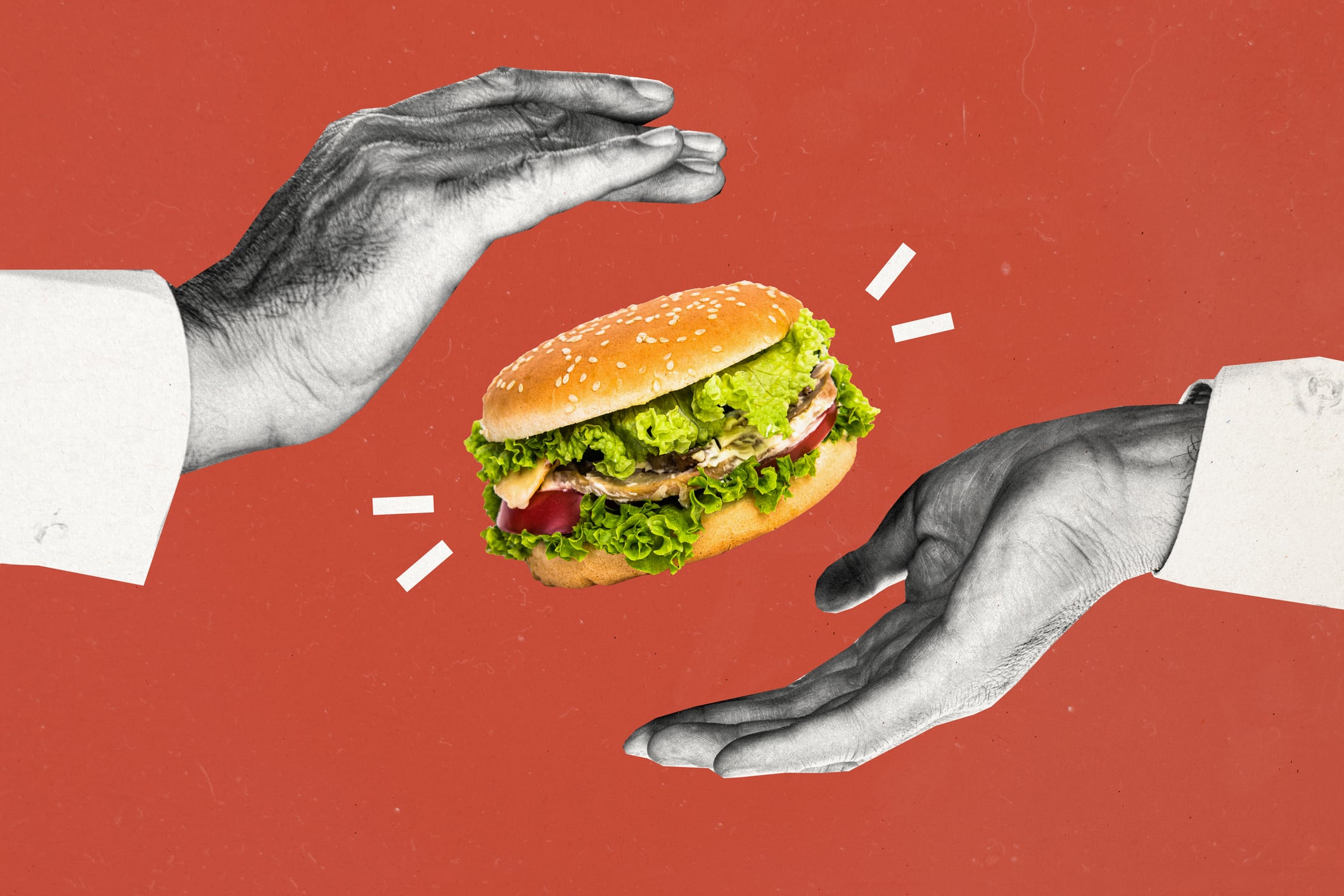What are the key findings from The Lancet UPF study - summary
- Harm linked to ultra-processed foods goes beyond nutrient content
- HFSS regulations fail as UPFs are reformulated to bypass ingredient limits
- Strong evidence links UPF diets to obesity, diabetes and cardiovascular disease
- Packaging chemicals in UPFs pose risks, including endocrine disruption which is linked to infertility
- Global UPF consumption is rising displacing traditional diets and reducing nutrient intake
Ultra-processed foods (UPFs) have received their biggest blow yet.
A landmark series of papers from the prestigious medical journal The Lancet has made the strong case that they’re linked to to a range of chronic health conditions, causing harm to nearly every organ system in the human body.
The study, which assessed more than 100 papers on the topic, suggests that dietary quality globally is being reduced by the prevalence of UPFs.
Here are the five biggest findings, and their implications for food and beverage.
1. UPF harms is not only linked to nutrients
Many critics of the Nova classification, by which the level of food processing is judged (see below) have argued that it confuses correlation with causation. UPF consumption has been linked in many cases to poor health outcomes, but this, critics argue, is caused by the nutrient content of the foods rather than their status as UPFs.
This study argues that there are other factors at play: low content of phytochemicals which protect health, as well as high energy density and disruption to food structures.
Disruption to food structures, for example, can affect how the food is digested, which could have a negative outcome.
“Most ultra-processed foods do not resemble the real foods they were derived from,” explains Marion Nestle, one of the researchers. “In extracting their ingredients, they make them more quickly digestible and their calorie sources more quickly absorbed, not necessarily to the benefit of metabolism.”
Soft textures have also been linked to harm. “Soft textures do not require chewing so the digestive process is speeded up,” which is likewise not beneficial to the metabolism, Nestle explains.
Even the healthier UPFs are less healthy than their more minimally processed counterpart. By this, they mean that ultra-processed yoghurt is less healthy than plain yoghurt.
For industry, these findings may mean that there is more factors to address while exploring the improvement of products’ health impacts, rather than just nutritional composition.
What are ultra-processed foods?
Highly processed foods have many definitions, but the most commonly used is from the Nova classification, developed in 2009 by researcher Carlos Monteiro. The Nova classification sorts foods into four groups: minimally processed foods, processed culinary ingredients, processed foods and ultra-processed foods.
- Minimally processed foods: The first group involves foods that either remain in their natural state, or are processed in such a way that their food matrix (physical structure of the food) remains intact. These foods include fruits, nuts, fungi, milk and meat.
- Processed ingredients: The second group includes ingredients obtained from the first group or from nature, such as butter, lard, honey, or table sugar.
- Processed foods: The third group are group one foods with group two ingredients added, although usually using techniques commonly used in the home. These foods include breads, cheeses, tinned or cured fish, and vegetables in brine.
- Ultra-processed foods: Group four, ultra-processed foods, are made from ingredients extracted from whole foods, combined with additives. They are made through a series of industrial processes, and frequently contain little or no whole foods. According to the Lancet series, they are “designed to compete” with the other three groups.
2. Policy focusing on nutrients doesn’t go far enough
The research is critical of regulation targeting foods high in fat, salt and sugar, suggesting that this has only led to UPFs being reformulated to remain under thresholds for these ingredients. The core issues remain, the researchers believe.
“Many products high in fat, salt and sugar can be made in home kitchens, and are not ultra-processed,” says Nestle. “They may or may not have the same effects on calorie intake.”
Instead, they suggest that legislation specifically targeting UPFs should be introduced. For example, restrictions on levels of UPF-specific ingredients, such as artificial sweeteners and colourants, could be put in place; alternatively, this could be combined with nutrient profiles to decide which products to regulate.
Suggestions for policies include warning labels, taxes on certain UPFs, and restrictions on school environments.
As to effect UPF taxes could have on lower income families, which often rely on cheap UPFs, it’s suggested, that the money raised from such taxes could be used to subsidise minimally processed meals for such families.
While these are only proposals at this stage, industry must be prepared for a renewed focus on the idea of targeting UPFs through policy.
3. Clearer link between UPFs and disease
The research collates numerous studies linking the increasing share of ultra-processed foods in diets around the world to the risk of chronic diseases and conditions.
These include obesity, cardiovascular disease, chronic kidney disease, type 2 diabetes, Crohn’s disease and depression.
Many of the studies explored were observational, merely exploring correlations between UPF consumption and these conditions. However, associations were consistent across large, high quality cohorts.

Some studies were more concrete. For example, two studies which compared the impacts of diets matching in (presented) calories and macronutrients found that the UPF diets were still linked to greater weight gain, as more calories had actually been consumed due to the diet’s hyper-palatability.
The available research fulfils most of the criteria used to determine causality for illness and disease. Associations were consistent, strong, and increased with greater UPF consumption.
In short, the link is not conclusively proven, but its consistency across more than 100 studies is strong.
Industry has already been dealing with negative associations consumers have with UPFs. This will only grow from these findings.
4. Packaging is part of the problem
Alongside negative implications from food itself, harms from UPFs are also linked to contaminants from food packaging.
Packaging commonly used for UPFs often contain harmful chemicals such as phthalates, bisphenols, and perfluoroalkyl and polyfluoroalkyl substances (PFAS).
These chemicals are often linked to endocrine disruption, which can cause health issues such as reduced fertility.
Phthalates, for example, have been consistently linked to reduced fertility, as well as negative impacts on child growth and development.
These chemicals can get into food from packaging used on long-life UPFs, or on UPFs that are eaten straight from the packaging. Consumers will then ingest them.
These findings link packaging, rather than simply food, to UPF harms. This puts the efforts to reduce harmful chemicals within packaging back into the spotlight.

5. UPF are increasing worldwide, displacing traditional diets
The major harms related to UPFs are not related just to specific UPF products, but the ‘UPF diet’ overall.
These diets, the series suggests, have been displacing traditional diets in countries around the world. UPFs are designed to displace traditional diets.
Between 2007 and 2022, UPF consumption increased significantly in low income, lower-middle income, and upper-middle income countries. Those with the lowest initial UPF consumption increased the most.
Much of the harm related to UPFs stems from the fact that they are consumed so heavily, stemming largely from their hyper-palatability.
Ultra-processed foods “are designed to be irresistible and to promote repeated consumption”, says Marion Nestle.
This is cause the “deterioration” of diet quality worldwide, the paper suggests, leading to an increase of the negative health outcomes above.
For example, many studies suggested that the populations experiencing increased UPF consumptions had decreased consumption of important nutrients such as protein and fibre, decreased consumption of health-protective phytochemicals, and higher intakes of certain additives linked to poor health outcomes.
In short, the study stresses, the problem is greater than just the foods themselves, but the overall dietary pattern they engender.





